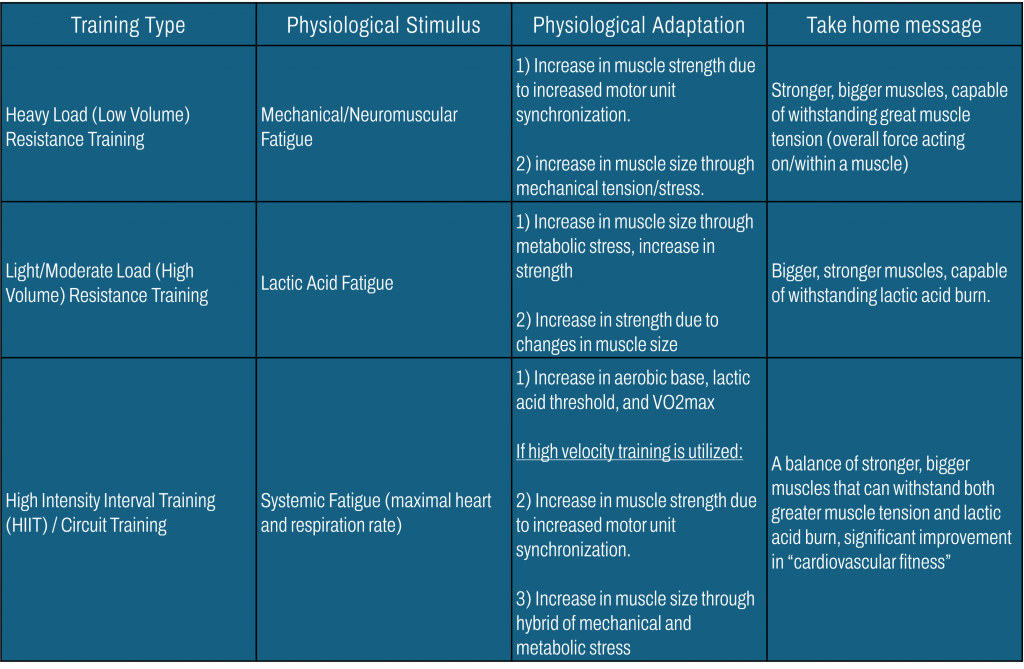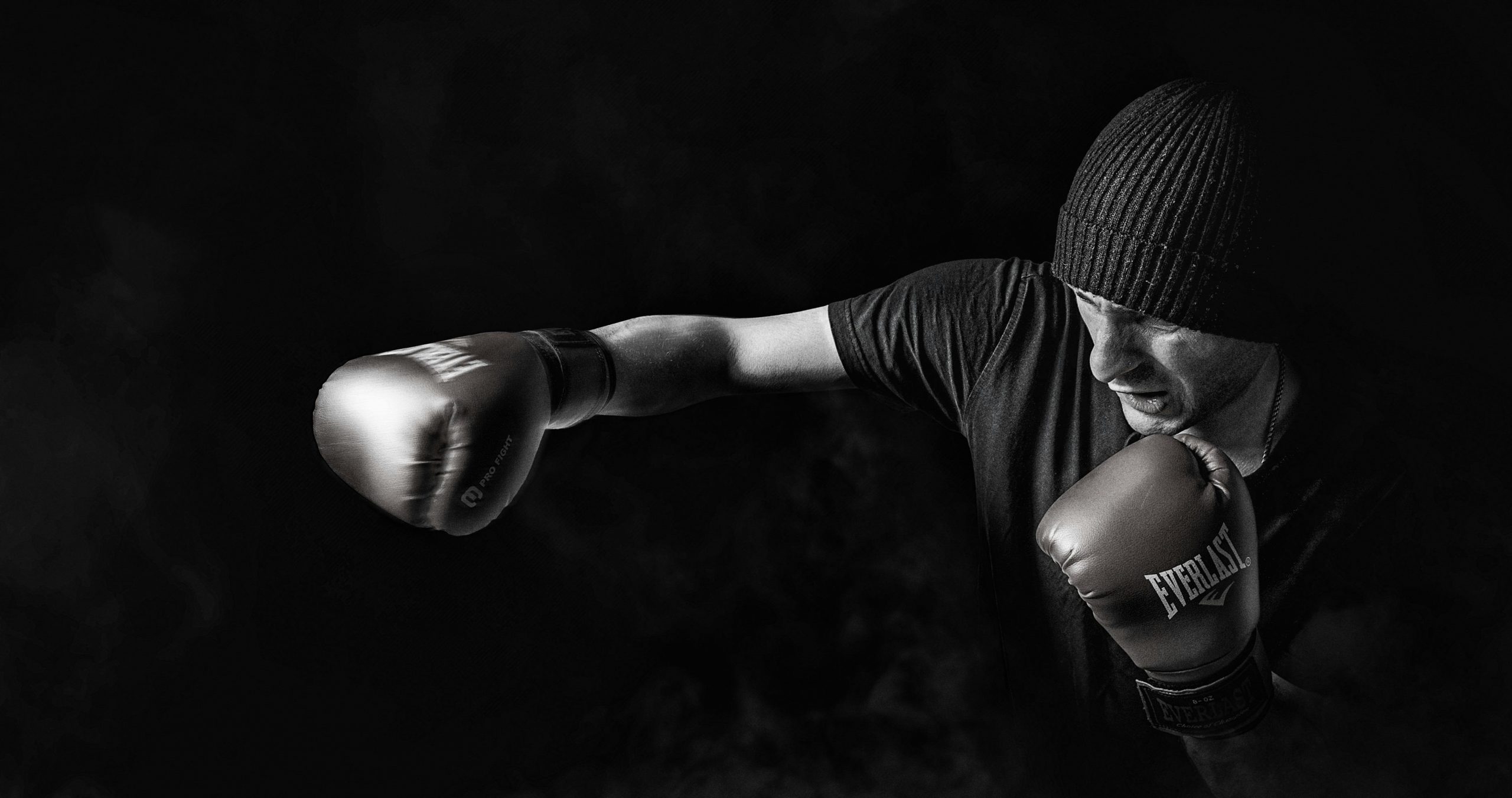At Kinetic Kickboxing Academy, our philosophy combines the art of creative movement with evidence-based training principles to optimize performance. Understanding the interplay between training intensity and duration can positively influence how we approach kickboxing and martial arts training. Understanding and applying the concepts of high intensity training can empower martial artists to maximize their potential, while improving training efficiency.
“The Inverse is True”
One of the fundamental principles of exercise physiology is the inverse relationship between training intensity and duration. Exercise intensity increases, the time needed to elicit a training response decreases. Practically speaking, high-intensity training delivers efficient, impactful results within a shorter timeframe as opposed to low/moderate-intensity, long duration workouts. Learning how to implement high-intensity training is also a viable solution to the time management problems of modern society, where 3-hours of exercise training per week seems like A LOT.
Measuring and Maximizing Exercise Intensity
To quantify exercise intensity, we often use the Rate of Perceived Exertion (RPE) scale, a subjective tool that helps gauge effort. By pushing ourselves to higher exertion levels, we can stimulate specific physiological thresholds – that must be overcome – in order for adaptation to occur. Training adaptation includes: improvements in strength, power/speed, muscle size, cardiorespiratory fitness, balance, coordination, flexibility, etc.
Here are some useful examples of a physiological threshold and its adaptive response:

Muscle Fiber Type and Function
There are two fundamental types of muscle fibers: type I (slow twitch), and type II (fast twitch). Slow twitch muscle fibers are dominant in exercises that are lower in intensity and longer in duration (such as steady state cardio). They also tend to have less muscle growth potential (hypertrophy).
The opposite is true for fast twitch muscle fibers, which are dominant in exercises using heavier loads, and with light – moderate loads, especially when movement velocity is intentionally increased. Unlike slow twitch muscle fibers, fast twitch have greater muscle growth potential.
Since velocity is a major factor in fiber type recruitment, fast twitch fibers are pivotal (pun intended) in kickboxing and martial arts performance. Training adaptations in muscle size, strength, power/speed, are essential for improving punching, kicking, and footwork techniques.
More on this in a second – but first a little bit more nerdy science…
Metabolic Advantages of High-Intensity Training
One key advantage of high-intensity training is its impact on metabolism, particularly through the concept of EPOC (Excess Post-Exercise Oxygen Consumption) Following intense exercise, the body requires additional oxygen (and substrates, such as: glucose, amino acids, and fatty acids) to recover, repair tissues, and replenish energy stores; thus, stimulating a “metabolic afterburn” post workout.. The more intense a workout is, the greater the EPOC, making high-intensity training a powerful tool for muscle development, cardiorespiratory fitness, and fat loss.
High-Intensity Training in Kickboxing and Martial Arts
In order for punching and kicking techniques to be effective, power and speed are essential. One exception is footwork, where speed of movement and staying light on your feet is much more practical than power (i.e. stomping the ground).
Imagine a street fight, or a sanctioned amateur/professional fight. No one is going to punch and kick at submaximal speed/power for non-stop, sustained activity (such as an endurance style kickboxing class). Rather, nearly all movements are intended to be as explosive as possible – with the exception of feints and subtle footwork – in order to deliver quick and powerful strikes/movement. This is energetically very taxing to the body, which is another way of saying “stimulating your metabolism.” This is why fighters need to pace themselves for sanctioned fights of 3 – 5 minutes rounds. They need to explode and recover, repeatedly.
Make no mistake, there is an endurance component that is critical for SANCTIONED FIGHTS so fighters can pace themselves and endure round after round. However, this is not necessarily the case in an actual street fight, which may last mere seconds. There is an apt saying at Kinetic Kickboxing Academy: stun and run. Get your strikes in when and while you can, and then escape to safety.
Piecing Together the Perfect Combo
Yes – pun intended!
In the fast-paced, high-energy environment of kickboxing, high-intensity training is absolutely necessary. While endurance training has its merits, its role in kickboxing is supportive rather than central. Low-intensity, long duration workouts (i.e. jogging for 60 minutes non-stop) help to develop a functional aerobic base, but the focal point of endurance training in kickboxing is on recovery.
This is not to say that lower intensity kickboxing practice is not beneficial. To help develop a strong aerobic base, it is a solid strategy to practice kickboxing and martial arts drills at a lower intensity for 3 to 5 minutes, while minimizing rest between techniques.
At Kinetic Kickboxing Academy, our training sessions are designed to mimic the intensity of a kickboxing match, often employing work-to-rest ratios such from 1:1 – 1:3. A great example of the 1:1 interval ratio is a series of explosive punches and kicks for 30 seconds, followed by 30 seconds of gentle footwork to enable recovery. If PEAK power and speed are being specifically trained, more intention complete rest intervals are typically required (ie 1 minute of all-out kickboxing, followed by 2-3 minutes of rest).
Embracing the Science of Movement
Are you ready to take your training to the next level? Explore our resources on kickboxing and martial arts methodologies, and the Kinesiology Concepts (exercise science) behind movement.
